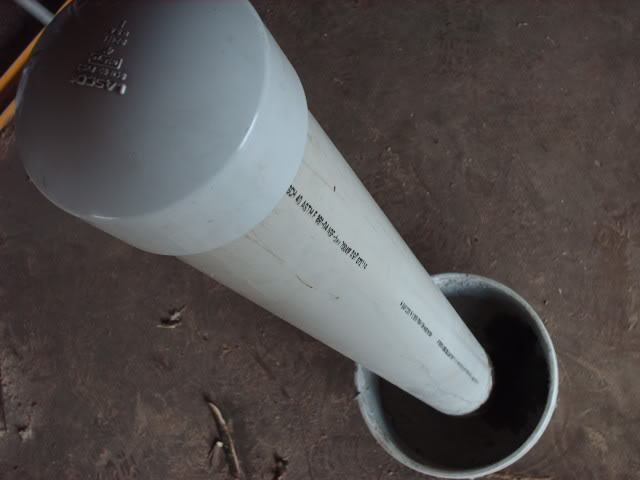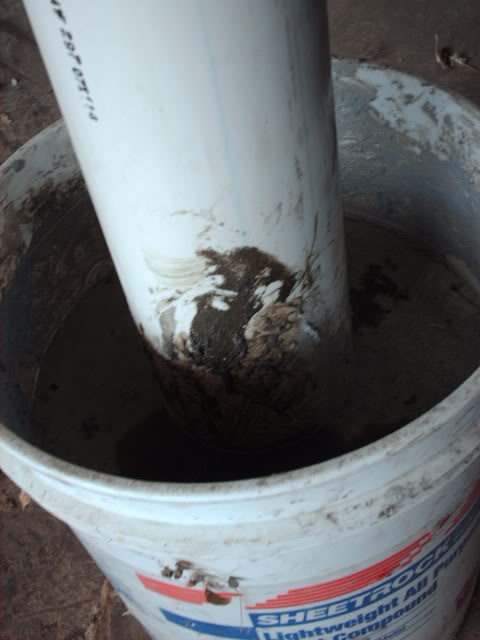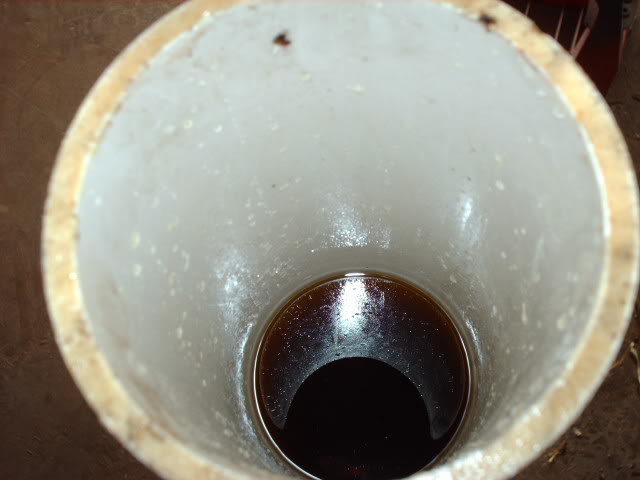Hello, any recommendations as to the best product or method to preserve wooden hilts and hafts. I tried the search function but had no luck. Thanks
historically, that would be boiled linseed oil
Currently as well. It soaks in and ...lubricates? the wood fibers. For a piece of wood that is going to see impact, nothing is better.
Thanks for the advice. Is this readily available?
Any hardware store should have it... It's a staple for woodworkers
line seed oil is a nice clear finish, you can use it to thin down other oil finish products because its the primary binder (thing that holds solutions together) in everything from old fashioned varnish to actual oil based paints.
its very easy to apply - you can put your first coats on heavy - it penetrates the wood very deeply it may take 7-8 coats before you begin to see a sealing finish begin to appear depending on the type of wood its on.
I personally use Tung and teak oil on wood project, but that's because I think it pops the wood grain out a little more.
its very easy to apply - you can put your first coats on heavy - it penetrates the wood very deeply it may take 7-8 coats before you begin to see a sealing finish begin to appear depending on the type of wood its on.
I personally use Tung and teak oil on wood project, but that's because I think it pops the wood grain out a little more.
+1 for linseed. I've use it for pretty much anything made out of wood, including restoring old axe hafts for about 10 years now and I've been stunned by how well it works. When hafting an axe I'll let the end soak in linseed oil for a few minutes before putting the head on and wedging it (I also coat the wedge in oil) - it lubricates the axe head going onto the handle, then it lubricates the wedge going in and then it'll all cure and lock up solid.
For axes I generally wrap the helve in paper towels soaked with linseed oil and then wrap in tin foil like this:
[ Linked Image ]
This is basically the next best thing to a bath of oil - the wood will soak up a ton of oil. It transformed this:
[ Linked Image ]
to this:
[ Linked Image ]
It's kinda impractical for larger pieces of wood but worth the effort if you can. Still more practical than a true BLO bath. Also note that BLO tends not to truly dry when left on the surface; it's not a varnish. If you let it sit on the surface it will become somewhat tacky and gummy, which is pretty unpleasant. I don't let an oil coated product be exposed to the air for long - as soon as I've soaked the wood (either with the paper towel wrap or full submersion) I'll rub it down with fine steel wool (this removes any fuzzy fibers on the wood and leaves a nice satin finish) and then wipe it off with a rag.
Also note that oil-soaked rags must be disposed of properly; if they're bundled up in a ball, they can produce heat as they cure and catch fire. I usually only have a few at a time, so I lay them out flat until they dry (so they can't build up heat) and then throw them out, but some people insist on burning them.
Danish oil can also be made with linseed oil and a lot of people prefer it over an oil - part varnish, part linseed/tung oil and part thinner. If you look around on google you can find people's preferred recipes with exact quantities and brands and how they apply it.
Hope that helps!
Pete
For axes I generally wrap the helve in paper towels soaked with linseed oil and then wrap in tin foil like this:
[ Linked Image ]
This is basically the next best thing to a bath of oil - the wood will soak up a ton of oil. It transformed this:
[ Linked Image ]
to this:
[ Linked Image ]
It's kinda impractical for larger pieces of wood but worth the effort if you can. Still more practical than a true BLO bath. Also note that BLO tends not to truly dry when left on the surface; it's not a varnish. If you let it sit on the surface it will become somewhat tacky and gummy, which is pretty unpleasant. I don't let an oil coated product be exposed to the air for long - as soon as I've soaked the wood (either with the paper towel wrap or full submersion) I'll rub it down with fine steel wool (this removes any fuzzy fibers on the wood and leaves a nice satin finish) and then wipe it off with a rag.
Also note that oil-soaked rags must be disposed of properly; if they're bundled up in a ball, they can produce heat as they cure and catch fire. I usually only have a few at a time, so I lay them out flat until they dry (so they can't build up heat) and then throw them out, but some people insist on burning them.
Danish oil can also be made with linseed oil and a lot of people prefer it over an oil - part varnish, part linseed/tung oil and part thinner. If you look around on google you can find people's preferred recipes with exact quantities and brands and how they apply it.
Hope that helps!
Pete
be aware that the oil-treated wood will darken over time compared to an untreated haft
I use linseed for wood and Renaissance Wax for metal.
I appreciate the wealth of knowledge you guys possess..wow..Someone mentioned lemon oil, is that any good?
The name of the product I use is "GB Lin-speed Gunstock Finish & Care Oil".
It works very well on wood.
It works very well on wood.
| Larry New wrote: |
| I appreciate the wealth of knowledge you guys possess..wow..Someone mentioned lemon oil, is that any good? |
Lemon oil is more of a cleaning product than anything else as far as I know. You could use it to finish wood, sure-- most organic oils are good for that to some degree although you should avoid cooking oils. Linseed oil, tung oil, or "Danish oil" (a combination of varnish and linseed oil) will do just fine though and are easily obtainable at any decent hardware store. Check the paint aisle. You can apply it either with a rag or fine steel wool. Lemon oil, more than anything, will give you a bit of a "Pledge" cleaning smell and a bit of shine... it probably wouldn't last as long as the other oils and quite likely would be more expensive for the quantity you get.
I also use boiled linseed oil and have experienced great results.
As Peter mentioned above, PLEASE Google "boiled linseed oil fire hazard" before using it for the first time. Rags soaked with boiled linseed oil can combust if not dried and disposed of properly.
As Peter mentioned above, PLEASE Google "boiled linseed oil fire hazard" before using it for the first time. Rags soaked with boiled linseed oil can combust if not dried and disposed of properly.
| Wikipedia wrote: |
| Rags soaked with linseed oil stored in a pile are considered a fire hazard because they provide a large surface area for oxidation of the oil, and the oil oxidises quickly. The oxidation of linseed oil is an exothermic reaction, which accelerates as the temperature of the rags increases. When heat accumulation exceeds the rate of heat dissipation into the environment, the temperature increases and may eventually become hot enough to make the rags spontaneously combust.
In 1991, One Meridian Plaza, a high rise in Philadelphia, was severely damaged and three firefighters perished in a fire caused by linseed oil-soaked rags. In 2011, a garage in Sacramento also caught fire due to the spontaneous combustion of linseed oil-soaked rags. |
None of the other writers have mentioned it but I generally make a mixture of linseed oil and mineral spirits and pad that on with a rag. Generally when I make the mixture I make it in a recycled food jar and leave the rag in the jar, no worries about drying rags that way.
Disposing of the rags is definitely NOT rocket science, just spread them out or hang them ( after squeezing out as much of the oil as possible) and let them air dry and then dispose of them.
My methodology is very old school, I wipe on thin coats of the oil mixture over a period of days until I get the penetration I want.
In general, I don't consider oiling a piece the last step and will use a wax as a final coat after the mineral oil/ linseed oil mixture has dried.
Disposing of the rags is definitely NOT rocket science, just spread them out or hang them ( after squeezing out as much of the oil as possible) and let them air dry and then dispose of them.
My methodology is very old school, I wipe on thin coats of the oil mixture over a period of days until I get the penetration I want.
In general, I don't consider oiling a piece the last step and will use a wax as a final coat after the mineral oil/ linseed oil mixture has dried.
I have a Hickory waster from Purpleheart Armoury, and I've put 7-8 coats on it, with a light sanding in between coats and it's so smooth it almost feels like plastic. I bought my Linseed oil at Walmart, and was carded!
| Matthew P. Adams wrote: |
| I have a Hickory waster from Purpleheart Armoury, and I've put 7-8 coats on it, with a light sanding in between coats and it's so smooth it almost feels like plastic. I bought my Linseed oil at Walmart, and was carded! |
this actually does not surprise me. Pa has EPA laws prohibiting the sale of oil based paints (something about the potential to contaminate ground water) although you can still find linseed oil its not something that there is a whole lot of stock of.
personally I've always favored oil finishes on wood rather than acrylics. as I usually apply a sealer, the first coats I put on are heavy, the dry wood will just soak it up fast without problems. once a shine begins to build up, using thinner coats, I'll lightly sand with 600 grit paper - then 0000 steel wool and reapply. repeat the process until I get that nice glassy solid seal.
I forgot about this earlier, but thought it deserved a mention; Boiled Linseed Oil has a bunch of stuff added to it (including heavy metals, IIRC) to make it dry quicker. Do not use it on anything intended to be food safe. If it has to be food safe, some health food places should sell food grade flax seed oil which is the same thing, just unmodified. It will dry slower, but is non toxic.
Boiled Linseed Oil finishes...........................
[ Linked Image ]
[ Linked Image ]
[ Linked Image ]
[ Linked Image ]
[ Linked Image ]
[ Linked Image ]
Boiled linseed oil is an excellent wood finish, as has been said. I find that thinning it 50/50 with turpentine helps it to soak in, even in denser materials like bone and horn. It takes about 2 weeks to fully dry/harden, and it becomes a soft plastic like material when dry and seals the wood nicely. I apply it, give it two weeks, then add a thin application of paste wax for added moisture resistance.
Note that it will turn slightly yellowish after a year or two, not really noticeable on darker woods but might not be desirable on very light colored woods.
Note that it will turn slightly yellowish after a year or two, not really noticeable on darker woods but might not be desirable on very light colored woods.
I have a "soak tank" of linseed oil, cut with turpentine. My soak tank is a fairly simple affair, and cost me around $50 total to make. 5' of 4" wide PVC pipe, 2 caps, an empty bucket, and half a bag of concrete gives you this:

I capped the bottom, put it into a bucket, and filled it with concrete:

Filled with 1.5 gallons of linseed oil and 1 quart of turpentine:

This thing is great for sticks, cudgels, and any tool handles, especially axes and hawk handles. When I drive a wedge into an axe, hatchet, or hawk handle, I do it right after taking the handle out of the Soak Tank. The wood is actually pliable, but when it dries, it's rock hard.

I capped the bottom, put it into a bucket, and filled it with concrete:

Filled with 1.5 gallons of linseed oil and 1 quart of turpentine:

This thing is great for sticks, cudgels, and any tool handles, especially axes and hawk handles. When I drive a wedge into an axe, hatchet, or hawk handle, I do it right after taking the handle out of the Soak Tank. The wood is actually pliable, but when it dries, it's rock hard.
Page 1 of 2
You cannot post new topics in this forumYou cannot reply to topics in this forum
You cannot edit your posts in this forum
You cannot delete your posts in this forum
You cannot vote in polls in this forum
You cannot attach files in this forum
You can download files in this forum
All contents © Copyright 2003-2006 myArmoury.com — All rights reserved
Discussion forums powered by phpBB © The phpBB Group
Switch to the Full-featured Version of the forum
Discussion forums powered by phpBB © The phpBB Group
Switch to the Full-featured Version of the forum